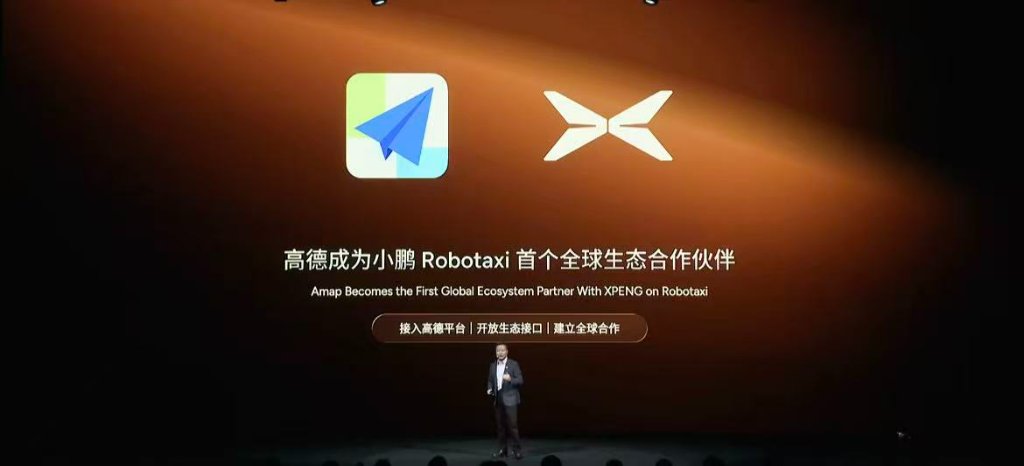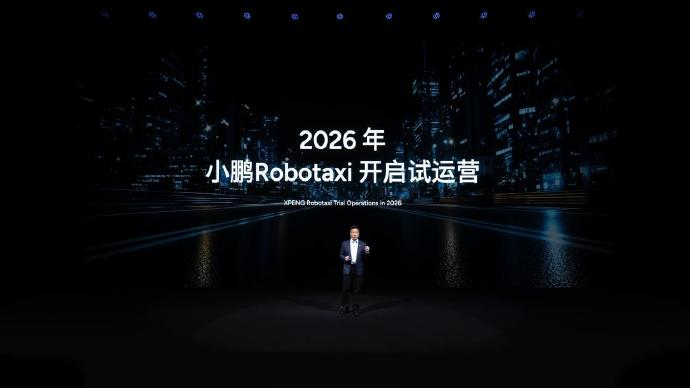
Xpeng Motors officially entered the autonomous taxi (Robotaxi) market and pulled up the AutoNavi map to work together.
At the just-concluded Xpeng Technology Day event, He Xiaopeng, CEO of the company, announced: AutoNavi Map will become the first global ecological partner of Xpeng Robotaxi. In the future, users can directly call Xpeng's driverless taxis in the AutoNavi App.
Xpeng plans to launch three self-developed Robotaxi models, including 5-seater, 6-seater and 7-seater versions, which are expected to start trial operation in 2026. These unmanned vehicles will be directly connected to AutoNavi's ride-hailing platform, and with the help of AutoNavi's huge user base and mature travel network, it can quickly obtain orders and operational support.
Further, the two sides also plan to join forces to go overseas and bring this self-developed self-driving taxi service to overseas markets.
On the same day, Xpeng also released a new generation of humanoid robot "IRON" and said that it aims to achieve large-scale mass production of high-end humanoid robots by the end of 2026. This shows that Xpeng is comprehensively deploying from smart cars to a broader field of artificial intelligence.
Three self-developed models will start trial operation in 2026
Xpeng Motors announced the detailed hardware and technical solutions of Robotaxi (self-driving taxi):
The car is equipped with 4 self-developed Turing AI chips, with a total effective computing power of up to 3,000 TOPS, which is specially designed for L4 high-end autonomous driving; In key systems (such as steering, perception, computing, etc.), two sets of hardware backups have been made, one has a problem, and the other is immediately topped to ensure safety; Equipped with Xpeng's latest second-generation VLA large model, it can learn various road conditions by "drawing inferences from one example" and automatically adapt to the traffic rules of different countries and regions; To enhance the experience, the vehicle also has off-board interaction features - such as displaying text or icons through the front windshield to tell passers-by that "I'm going to turn" or "I'm waiting for you to get in the car".

In 2026, Xpeng will not only launch these three Robotaxi, but also launch a new intelligent driving version of the model "Robo" for ordinary consumers. It uses the same set of hardware and autonomous driving capabilities as Robotaxi, and users can also freely switch between the two intelligent driving modes.
In addition, Xpeng will also open the Robotaxi software development kit (SDK) and invite developers and enterprises from around the world to participate and jointly create a richer autonomous driving ecosystem.
Join hands with AutoNavi to access mainstream taxi platforms
The key to this cooperation is to directly connect Xpeng's self-driving taxi (Robotaxi) to AutoNavi's ride-hailing platform. AutoNavi has previously opened its entrance to autonomous driving companies such as WeRide and Pony.ai (Pony.ai). For Xpeng, joining AutoNavi means:
✅ It can immediately use the traffic of hundreds of millions of users of AutoNavi;
✅ With AutoNavi's proven mobility network, quickly launch and operate your own Robotaxi service.
Guo Ning, CEO of AutoNavi, said: "This cooperation is not only a business upgrade, but also an important step for us and Xpeng to explore artificial general intelligence (AGI) together based on a common vision. He also revealed that the two sides will join forces to go overseas in the future to bring China's leading self-driving taxi services to the global market.
Released the humanoid robot IRON, with the goal of mass production in 2026
At the event on the same day, Xpeng Motors also released a new generation of humanoid robots - IRON. This robot is very bionic in design and has: Similar to human spine structures Biomimetic muscular system and flexible skin with full coverage The head is equipped with a 3D curved display that can "interact with expressions" Flexible shoulders and a dexterous hand with 22 degrees of freedom (close to the flexibility of a human hand) In terms of intelligence, IRON is equipped with Xpeng's self-developed large model of the physical world, and is equipped with 3 Turing AI chips to form a set of "big and small brain" collaborative system (integrating vision, language and mobility), which can realize complex tasks such as conversation, walking, grabbing objects, and interacting with people.
It is worth mentioning that IRON is the industry's first humanoid robot to apply all-solid-state batteries, but Xpeng has not yet announced battery life or specific performance parameters.
Xpeng announced that it aims to achieve large-scale mass production of high-end humanoid robots by the end of 2026. In addition, Xpeng's flying car brand "Huitian" land aircraft carrier (detachable land-air integrated vehicle) is also planned to start large-scale deliveries in 2026, and the current order has exceeded 7,000 units.
The ideal is very plump, and the reality is very skinny
Can it be implemented as scheduled in 2026? Robotaxi's regulations, insurance, and liability determination are still global problems, and although China has friendly policies, it will still take time for large-scale commercialization. All-solid-state batteries "do not mention parameters", does it produce energy, how long does it last, and how much does it cost? ——These are the life and death lines of humanoid robots.
AutoNavi cooperation ≠ exclusive binding, AutoNavi is connected to a number of Robotaxi companies at the same time, Xiaopeng is only the "first", not necessarily the "only".
Investment advice: How to participate in this "future travel revolution"?
1. Short-term (1–2 years): Focus on technical validator nodes
Key tracking: 2025 Robotaxi road test data; whether the trial operation will start as scheduled in Q1 2026; Order conversion rate after the launch of the AutoNavi platform.
2. Medium-term (2-3 years): Layout of the "smart travel ecological chain"
Direct target: Xpeng Motors (XPEV); Indirect benefits: LiDAR (such as Hesai, Suteng Juchuang); high-precision maps (Nav Map Xin, Baidu); Automotive-grade chips (Horizon, Black Sesame).
3. Long-term (3–5 years): Bet on the integration of "AI + physical world"
If IRON robots are successfully mass-produced, it will open up a 100 billion-level service robot market; Attention: bionic actuators, flexible sensing, all-solid-state battery supply chain; AI companies with "embodied intelligence" capabilities.





